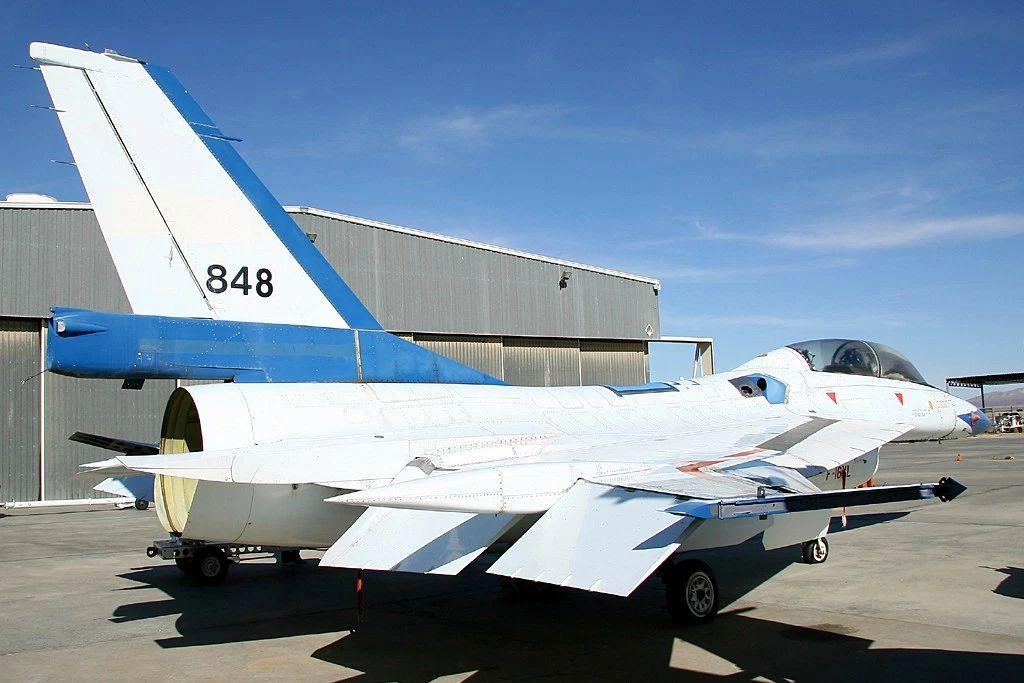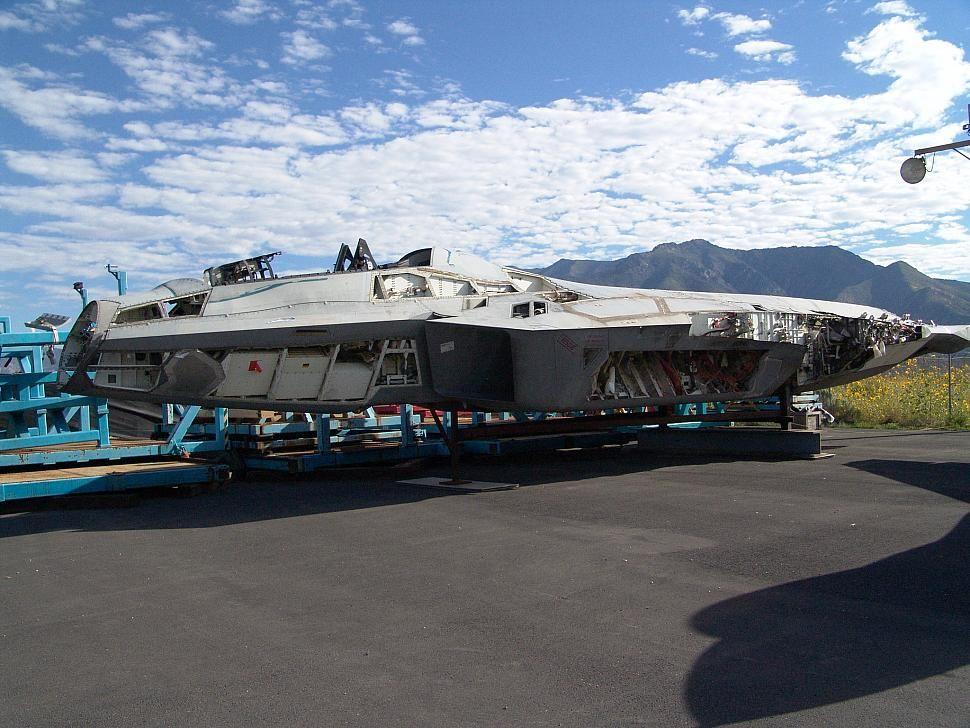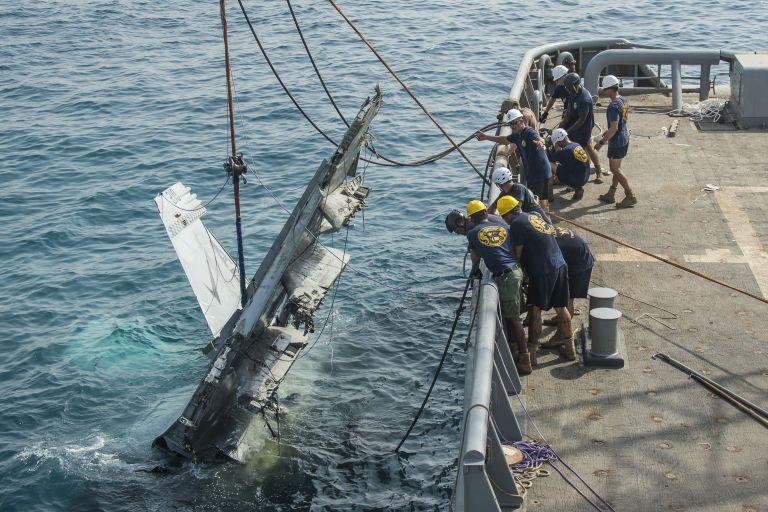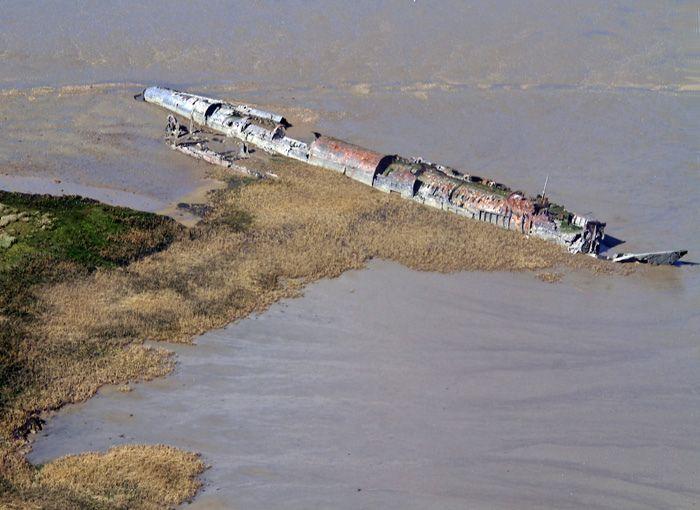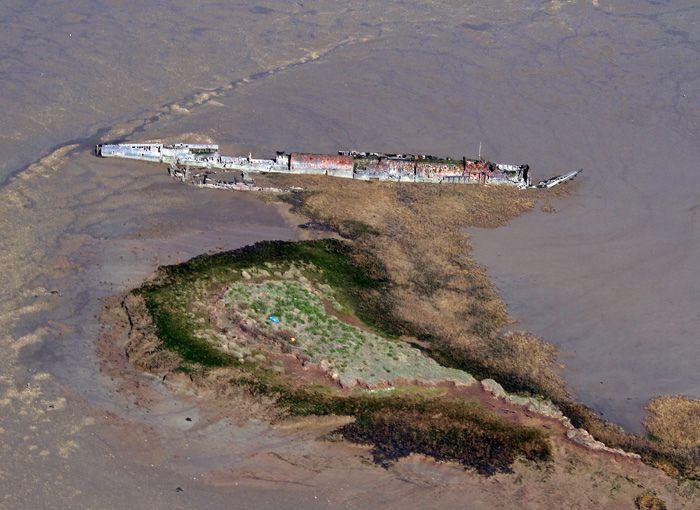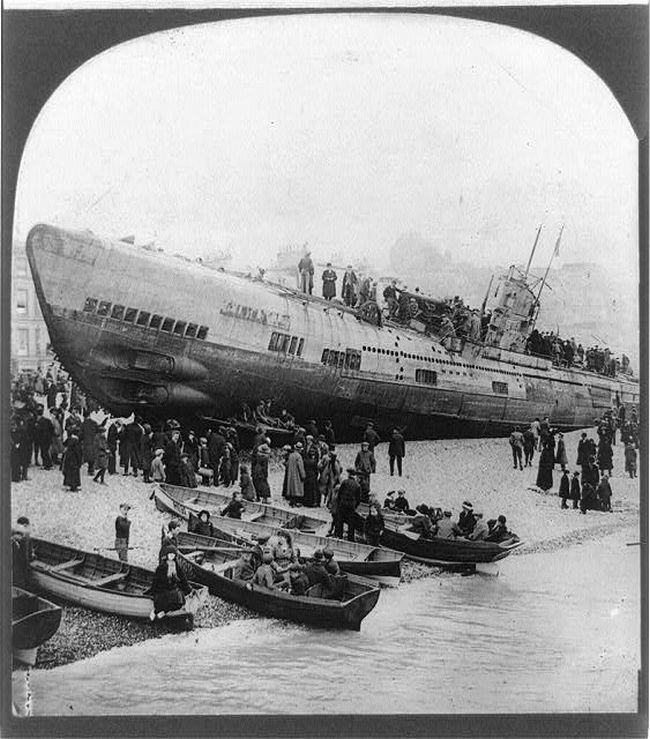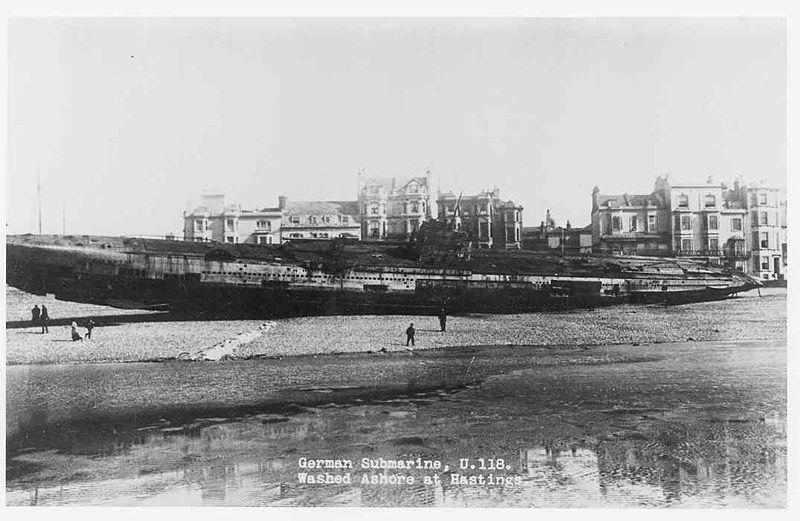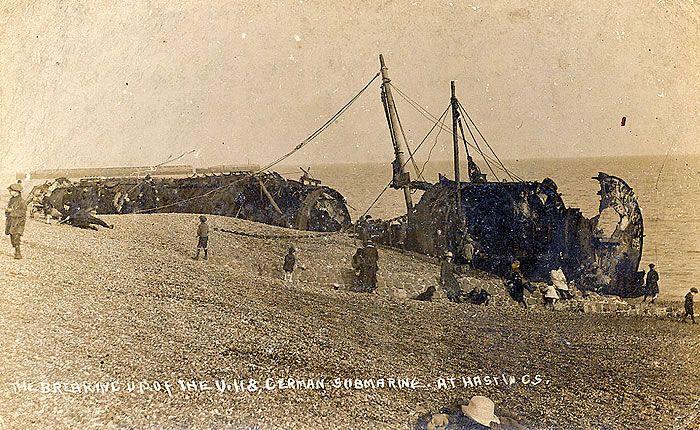![abandoned-wartime-structures-built-for-the-defence-of-britain]()
The late 1930s and early 1940s saw an unprecedented level of construction in Britain. Across the land, pillboxes sprung up, defensive lines were dug, concrete bunkers and gun emplacements emerged and austerity airfields dominated rural regions as the entire nation was moved onto a war footing. At any moment, the tanks of Nazi Germany could roll over this green and pleasant land, and it was up to the British people to stop them.
Of course, this eventuality didn’t happen. World War Two ended without a single Wermacht troop carrier landing on Britain’s beaches or a single Panzer tank rumbling along country lanes. Yet the manic construction boom that accompanied the Second World War didn’t fade into history. On the contrary, large swathes of defensive structures still exist across the British Isles, attesting to the darkest hour in the UK’s modern history. Here are 10 examples of often-hastily-built structures, each designed for a crucial purpose in the defence of Britain during World War Two and later the Cold War, that endure today.
The Defence of Britain: Anti-Tank Blocks
![ruined-anti-tank-blocks-left-over-from-world-war-two]()
![ruined-anti-tank-blocks-left-over-from-world-war-two-2]()
![ruined-anti-tank-blocks-left-over-from-world-war-two-3]()
![ruined-anti-tank-blocks-left-over-from-world-war-two-4]() (Images: Mike Searle (1, 2, 3, 4); defences at Fairbourne, Studland & Poole Harbour)
(Images: Mike Searle (1, 2, 3, 4); defences at Fairbourne, Studland & Poole Harbour)
If you’ve ever been to a British beach, you’re probably familiar with the strange concrete cubes that line so many of them. Sturdy, squat blocks, they dot the shoreline up and down the country; lone sentinels staring out to sea. You may be unaware of what they really are. These great concrete cubes were anti-tank blocks designed to halt the German advance.
Interestingly, many were set up in places you wouldn’t expect a Nazi invasion force to land. The beaches of Wales have a staggering number of old anti-tank blocks, thanks to the fear among Britain’s high command that Germany would use neutral Ireland as a place from which to stage an invasion. As unlikely as that sounds now, back then there was a unsettling precedent. The Nazis had rolled through supposedly-neutral Belgium as part of their invasion of France. Not expecting an attack from that quarter, French defensive lines on the Belgian border were woefully unprepared. Britain’s surviving anti-tank blocks are an enduring reminder that Britain wasn’t going to be fooled that easily.
Defensive Tunnels and Shelters
![Wartime Fan Bay Deep Shelter beneath the White Cliffs of Dover]()
![Wartime Fan Bay Deep Shelter beneath the White Cliffs of Dover 2]()
![Wartime Fan Bay Deep Shelter beneath the White Cliffs of Dover 3]()
![Wartime Fan Bay Deep Shelter beneath the White Cliffs of Dover 5]()
![Wartime Fan Bay Deep Shelter beneath the White Cliffs of Dover 12]() (Images: Disco-Dan; Fan Bay Deep Shelter in Kent)
(Images: Disco-Dan; Fan Bay Deep Shelter in Kent)
In November 1940, Britain stood braced for the worst. The catastrophe of Dunkirk had happened. The Battle of Britain was in full swing. The likelihood of a German invasion through the English Channel was at an unprecedented high. In response to this threat, London ordered the construction of a deep set of defensive tunnels and shelters inside the White Cliffs of Dover. One hundred days later, Britain’s newest defensive line was ready.
One example was the Fan Bay Deep Shelter; the work of a nation not prepared to go quietly. If the Channel fell, officers and troops would repair to the tunnels and begin a viscous bombardment of enemy ships, mercilessly pounding the Nazis before they could reach the shoreline. Abandoned in the 1950s, the tunnels were eventually filled in with debris following an arson attack in the ’70s and then completely forgotten about. In 2014, the National Trust acquired the land and accidentally rediscovered them. Fast-forward two years and the wartime tunnels have been excavated and are finally open to the public.
Spigot Mortar Emplacements
![abandoned-spigot-mortar-emplacement]()
![spigot-mortar-emplacement-in-second-world-war]() (Images: via Wikipedia; IWM; top: spigot mortar at Elvetham Heath)
(Images: via Wikipedia; IWM; top: spigot mortar at Elvetham Heath)
Inland, the nature of defenses changed perceptibly. Whereas those constructed around the coast often seemed like desperate ‘last stands’ or haphazard blocks designed to impede immediate progress, inland defences tended to be designed to inflict as much damage on the enemy as possible. Enter the Spigot Mortar emplacement.
A relatively small, oddly-shaped roofless bunker equipped with a vast concrete pedestal, the spigot emplacements were intended to hurl explosive mortar shells towards advancing enemy troops. Small teams could get in, set up, fire a mortar and bug out before advancing Germans knew what hit them; a useful advantage in a hypothetically occupied Britain torn apart by guerrilla warfare. Many still dot the countryside, from the fields outside Aldershot in Hampshire, to the edges of overgrown woodlands on the south coast. Although none ever saw action, they must have been a comforting sight to those living nearby.
Rusting Allan Williams Turrets
![allan-williams-turrets-abandoned-wartime-defence-of-britain-armament]() (Image: via Wikipedia; Surviving Allan Williams turrets at Cockley Cley Hall in Norfolk)
(Image: via Wikipedia; Surviving Allan Williams turrets at Cockley Cley Hall in Norfolk)
Like the Spigot Mortar Emplacement, the Alan Williams Turret was designed to slow down a Nazi invasion by inflicting maximum casualties on the enemy. A rotatable metal pillbox, sits above a deep pit with room for three people. Able to spin on ball bearings, it would afford British fighters some protection while allowing them to strafe passing Germans. Like the Spigot Emplacement, it was also flexible. The Turret could be set up in two short hours, and completely disassembled in just 30 minutes.
During the course of the war, over 200 Allan Williams Turrets were constructed and deployed across the country. But post-war shortages meant nearly all of them were subsequently scrapped. Today, only a handful survive, mostly in Essex, Dorset, Norfolk, and on the Isle of Wight. The majority of them are now recognized as important historic artifacts.
Ruck Machine Gun Posts
![abandoned-ruck-machine-gun-post-from-world-war-two-1]()
![abandoned-ruck-machine-gun-post-from-world-war-two-2]()
![abandoned-ruck-machine-gun-post-from-world-war-two-3]() (Images: Gaius Cornelius (1, 2); HM Government)
(Images: Gaius Cornelius (1, 2); HM Government)
One of the quirks of preparing the whole of Britain for invasion at such short notice was the regional differences that sprang up in defensive equipment. The Ruck Machine Gun Post (also known as the Ruck Pillbox) was one such variation. Designed by midlands resident James Ruck, it became a defensive structure of choice throughout Lincolnshire and along the east coast, without really catching on elsewhere.
To Ruck’s eternal credit, the design was a masterpiece of simplicity. Essentially a concrete tube dug into the hillside and reinforced with sandbags, paving slabs and earth, it allowed a team of men to quickly take shelter and empty their machine-guns out the entrance at incoming enemy troops. Deliberately unsophisticated, the design was valued for its ease of construction and disassembly, allowing a large defensive line to be built quickly at very low cost.
Today, only five Ruck Machine Gun Posts are known to exist. The rest are thought to have been dismantled or lost to coastal erosion; victims of their own temporary nature. The example above (top) is at Holbeach in Lincolnshire.
Type 22 Pillboxes
![abandoned-type-22-pillbox-for-the-wartime-defence-of-britain]()
![abandoned-type-22-pillbox-for-the-wartime-defence-of-britain-2]() (Images: Palmiped; Gaius Cornelius; Type 22 pillboxes at Kelling and the Basingstoke Canal)
(Images: Palmiped; Gaius Cornelius; Type 22 pillboxes at Kelling and the Basingstoke Canal)
Wandered the British countryside and you could well encounter an abandoned pillbox. What’s more, it’s quite likely to be an old Type 22 defensive structure. Of the thousands constructed in the invasion panic of 1940-41, nearly 1,350 are still standing, keeping watch over Britain’s peaceful fields and meadows, just in case another threat should one day arise. Made of concrete and based on a regular hexagonal plan, these World War Two pillboxes were the most-important line of defence between the oceans and major cities like London.
Indeed, it’s around the capital that Type 22 pillboxes are most common. Surrey, Hampshire and Berkshire are scattered with them, as are Essex and Kent. Dug deep into woodland, they speak of a paranoia over the type of fighting Britain was expected to face: an apocalyptic vision of total war where the only possible outcome was destruction on a grandiose scale. Visited now, these strange, empty structures seem almost peaceful places, perfect for meditating and watching the birds – a far cry from their intended purpose.
Abandoned Beehive Pillboxes
![beehive-pillbox-near-dunstan-steads-in-northumberland]()
![beehive-pillbox-near-dunstan-steads-in-northumberland-2]()
![beehive-pillbox-near-dunstan-steads-in-northumberland-3]() (Images: Andrew Curtis (1, 2); Anthony Foster)
(Images: Andrew Curtis (1, 2); Anthony Foster)
With the fate of the nation at stake, there wasn’t always time to construct defensive lines from the best possible equipment. This abandoned ‘beehive’ pillbox near Dunstan Steads, Northumberland, shows how ingenuity overcame such challenges. Constructed from concrete-filled sandbags, it’s an effective solution to what was then an urgent problem, and one of several such designs in the area.
Despite the seemingly-temporary nature of the beehive pillboxes, a handful of them have survived all the way into the modern age. This, of course, was one of the great advantages of concrete. It might take only a couple of days to throw up a pillbox (or other structure in the defence of Britain, but it would take over 70 years for the result to fall apart. Even pillboxes made out of sandbags could be relied upon to temporarily withstand a Nazi bombardment. Decades later, they’re still present.
Stop Lines & Anti-Tank Islands
![hedgehog-removable-anti-tank-barrier-sockets]() (Image: Gaius Cornelius; Hedgehog removable anti-tank barrier sockets near Crofton)
(Image: Gaius Cornelius; Hedgehog removable anti-tank barrier sockets near Crofton)
![abandoned-world-war-two-railblock]() (Image: Gaius Cornelius; abandoned wartime railblock defence near Donyatt)
(Image: Gaius Cornelius; abandoned wartime railblock defence near Donyatt)
![abandoned-hairpin-ant-tank-defensive-obstacle]() (Image: Gaius Cornelius; ‘hairpin’ anti-tank obstacle, Narborough)
(Image: Gaius Cornelius; ‘hairpin’ anti-tank obstacle, Narborough)
![abandoned-wartime-ant-tank-mine-sockets-on-the-basingstoke-canal]() (Image: John Spooner; ant-tank mine sockets on Blacksmith’s Bridge, Basingstoke Canal)
(Image: John Spooner; ant-tank mine sockets on Blacksmith’s Bridge, Basingstoke Canal)
By 1942, Britain had been divided; if not politically, then certainly geographically. Fifty Stop Lines had been carved through the countryside, effectively dividing the nation into a series of blocks. The logic was brutally simple. If one line was broken, that ‘block’ could be quickly abandoned and subsequent lines reinforced, halting Nazi invaders in their tracks. Consisting of a mixture of natural and man-made defences, they would’ve made a Blitzkrieg-style raid on Britain far more difficult.
The vast bulk of these Stop Lines were made up of features like canals, rivers, and steep-sided banks. To make up the gaps between them, pillboxes, deep ditches, IEDs, concrete anti-tank blocks and posts, and gun emplacements were established. Where bridges or roads existed, explosive charges were planted that would be detonated in event of a retreat, blowing the path sky-high. It was hoped that these would effectively delay the German invasion indefinitely.
Today, large swathes of these lines are still visible, in the form of pillboxes, anti-tank posts, and other abandoned World War Two defensive detritus. Given their nature, it’s likely some traces will last hundreds of years to come.
Coastal Searchlight Emplacements
![abandoned-world-war-two-defence-of-britain-coastal-searchlight-batteries]()
![abandoned-world-war-two-defence-of-britain-coastal-searchlight-batteries-2]() (Images: Gaius Cornelius; Tony Atkin; abandoned coastal searchlight batteries)
(Images: Gaius Cornelius; Tony Atkin; abandoned coastal searchlight batteries)
It’s worth remembering that not all British wartime defences involved either places to shelter or aggressive means for eliminating enemy troops. More subtle, sometimes creative solutions were also required. One such example was the deliberate flooding of Romney Marsh ahead of Operation Sea Lion, meaning the German troops would be bogged down and trapped. Yet another example was the proliferation of coastal searchlights.
Somewhere between a deterrent and a useful piece of kit, the searchlight emplacements were hastily constructed up and down the coast to shine bright spotlights out onto the inky black seas and prevent a maritime attack under the cover of darkness. With their powerful searchlights tracking up the edges of Britain’s beaches, any landing German troops would have immediately found themselves shot to pieces by a barrage of machine-gun fire.
Like their pillbox brethren, the concrete coastal searchlight emplacements make for intriguing ruins, oddly-shaped concrete boxes, waiting for an invasion that will thankfully never come.
Into the Cold War: Royal Observer Corps (ROC) Monitoring Posts
![abandoned-roc-monitoring-post]() (Image: Endrick Shellycoat; Skelmorlie ROC Post, North Ayrshire, Scotland)
(Image: Endrick Shellycoat; Skelmorlie ROC Post, North Ayrshire, Scotland)
Although the Royal Observer Corps (ROC) played a decisive role in the defence of Britain during World War Two – most-notably monitoring and spotting enemy planes in the Battle of Britain – their distinctive monitoring posts weren’t actually constructed until the Cold War. By then, their role had switched from mere aircraft detection to something much-more sinister. From within their outposts, the ROC were to detect and report upon any nuclear explosions and the subsequent fallout.
Between 1958 and ’68, some 1,563 underground monitoring posts were constructed across Great Britain. Spaced eight miles apart, they were grubby, chilly, utilitarian places that were designed not to protect their occupants from the fallout of a nuclear attack, but to keep them alive just long enough to report the explosion and begin the process of retaliation.
![abandoned Royal Observer Corps Ponteland ROC Post in Northumberland]()
![abandoned Royal Observer Corps Ponteland ROC Post in Northumberland 2]()
![abandoned Royal Observer Corps Ponteland ROC Post in Northumberland 8]() (Images: Ian Gate; John C. Hughes; abandoned ROC post at Ponteland, northern England)
(Images: Ian Gate; John C. Hughes; abandoned ROC post at Ponteland, northern England)
Thankfully, these ROC posts were never used for their original purpose. By the end of the Cold War, they had all been abandoned. Today, they continue to dot the British landscape, reminders of when the whole country faced the frighteningly real prospect of nuclear annihilation.
Related: Google Earth reveals the Ghostly Images of Britain’s Wartime Airfields
The post 10 Abandoned Wartime Structures Built for the Defence of Britain appeared first on Urban Ghosts Media.
 (Image: Rene Verjans – website)
(Image: Rene Verjans – website) (Image: Rene Verjans – website; Phantom XV411 at Manston i)
(Image: Rene Verjans – website; Phantom XV411 at Manston i) (Image: Google Earth; Phantom XV411 awaiting disposal)
(Image: Google Earth; Phantom XV411 awaiting disposal)










